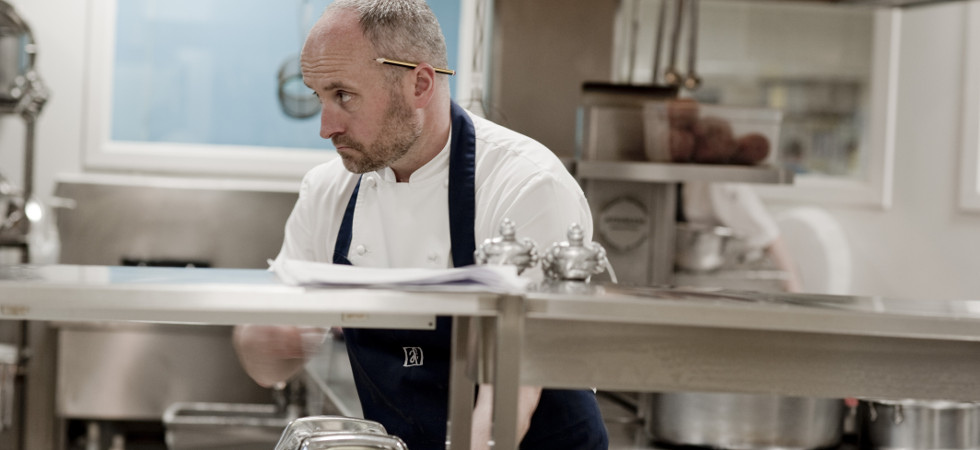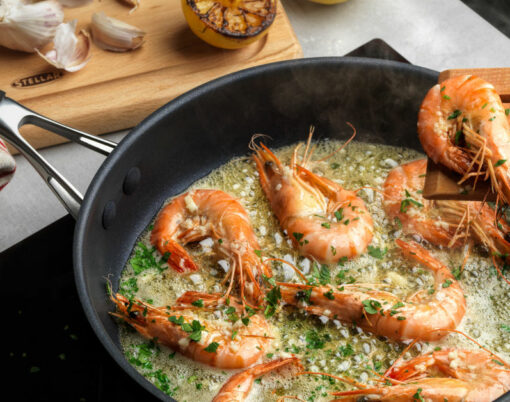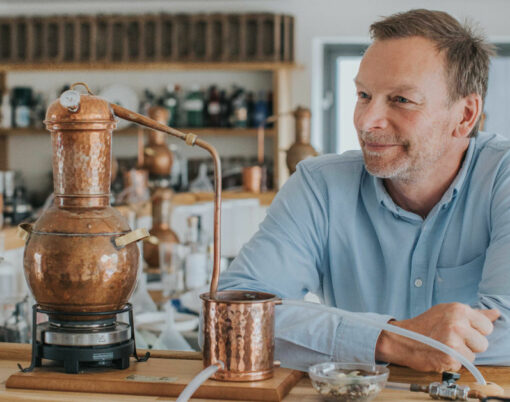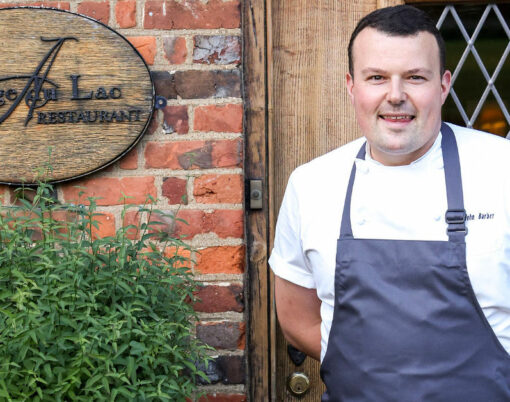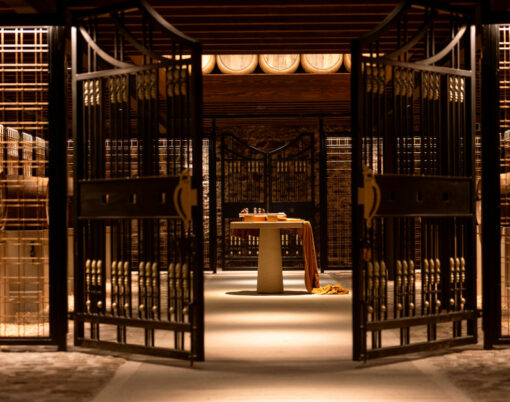Head chef of the acclaimed Restaurant Andrew Fairlie, Scotland’s only two Michelin Star restaurant, Stevie McLaughlin is one of the UK’s most respected chefs and has worked in the industry for many years.
He worked with Andrew Fairlie for 26 years before he sadly died of a brain tumour earlier this year, initially at One Devonshire Gardens and he then joined Restaurant Andrew Fairlie as a sous chef in 2001 when it first opened. Stevie is a true success story, having progressed through the ranks – and has held his current position of head chef since 2006.
We sat down with this culinary heavyweight and talked about everything from his signature dish to the changes he has made since becoming head chef at Restaurant Andrew Fairlie.

What inspired you to become a chef?
I fell into being a chef by accident – although there were a few things along the way that certainly drew me in. When I was at school one of those skill seeker surveys said I should be a welder or a chef. At a college taster day the first demonstration by a welder convinced me that I was going to be a welder; but the afternoon session was with a chef. When I tasted her buttery pastry I said to myself: “Wow, how did you do that?” and it was the flavour of that buttery pastry that took me to college.
Each day my bus passed One Devonshire Gardens and I knew it was the best and that I wanted to work there, so I asked and secured a placement. When I first met Andrew Fairlie I was amazed at how small he was in stature – I thought all head chefs were big guys with big hats, but his presence was immense – and this was before I’d even tasted any food!
When I was working part time at One Devonshire Gardens I loved the hard work, and good humour that came with working in a kitchen – I just knew I wanted to be part of that world. Even the most mundane tasks I was doing opened up my experience and the layers of learning inspired me again and again.
A significant day was when I was tasting an Assiette of Scottish seafood; the fish was amazing, but for me the one thing that stood out was the tomato butter sauce. It had such a depth of flavour that I hadn’t experienced before, because of the infusion of star anise that bought the tomato flavour to new heights. At this point I became hooked!
What changes have you made since becoming head chef at Restaurant Andrew Fairlie?
I became head chef twelve years ago and in that time my changes have been both personal and professional. As an individual, I have developed my ability to delegate and empower my colleagues, trusting in their own knowledge and experience to maintain our high standards as a team.
In terms of food changes, the offering has become a little lighter than before. One influential element has been the development of our own kitchen garden where now, most of our ingredients are grown. In many of our dishes, you’ll now find vegetable juices or herb oils instead of a meat based sauce.
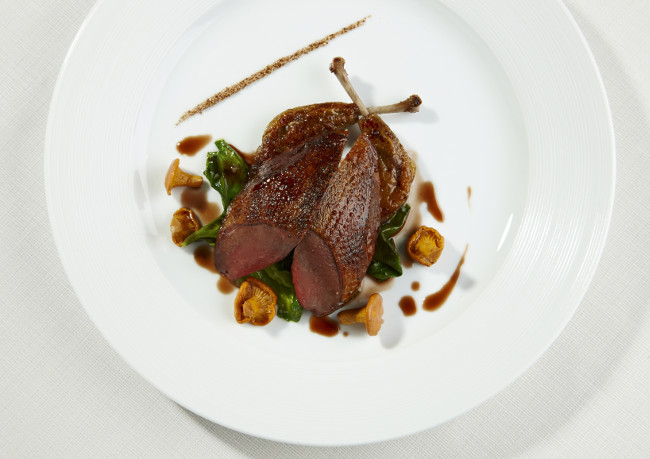
In many ways, it’s harder to cook simply and the secret is finding a brilliant ingredient and letting it sing. The devil is in the detail, as there’s a sense of honesty in cooking simple food – there’s nowhere to hide!
Another change has been in working practices; as we’ve been trying to lower working hours for the whole team. Presently the average is about 60 hours a week, which may surprise you to know is low! We’re aiming at 55 hours a week to bring more work-life balance to the team – encouraging everyone to work smarter and use our heads. I believe it’s important to fully enjoy down time, which makes working time fresh and more enjoyable.
What’s your signature dish?
It has to be the Home Smoked Scottish Lobster, which for many people is a real highlight of their experience with us. It’s a dish Andrew first had on the menu when I started working with him 26 years ago and it has never changed in all that time. It is always a feature of our a la carte and ten course Degustation menu.
Although there are only four ingredients there are thirty three different stages to get to the final result. We source the best lobster possible, creel caught in cool Scottish waters, we create the dish using just four ingredients and then serve it with a natural pairing; a glass of Krug Grande Cuvee.
When are you happiest?
I am happiest at home and at work.
At work: When service is in full swing, I take a step back and just watch everyone playing their part and working together in harmony, like cogs turning. That’s when I just go: “Wow, this team is fantastic” and it really makes me smile.
Looking around, when you see and feel the passion, it’s genuinely awe-inspiring. And when I then see the customers enjoying the food and appreciating the result of a team of 42 people who brought the meal to the table, from the gardeners to the front of house team, it is the best.
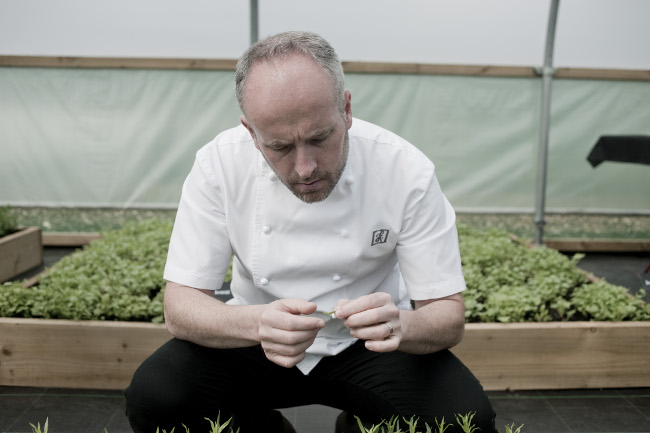
At home: Cooking at home with my wife and kids on a Sunday is a joy. I love to see their eyes and expressions when they taste something for the first time, or eating something that they truly love. I really value the chance to spend time together as a family and catch up on the week that’s just passed. It’s hard to beat those moments, eating as a family, enjoying conversation and quality time together – and sometimes we even let Mummy peel the potatoes!
What are the most important considerations when crafting your menu?
The quality of ingredients is the most important thing and I believe in committing to the highest quality ingredients you can afford to buy. That’s partly why we grow much of our own food for the restaurant, because then we know the quality is high and the source is good.
Quality of ingredients is closely followed by a focus on consistency. Every single plate that leaves the kitchen has to be perfect and surpass every customer’s expectation. We also have to make sure we are challenging our chefs every day, so they are developing sills and growing confidence all the time. We take immense price in growing our own talent and make sure our chefs are always learning and we are still teaching.
What would you do if you weren’t a chef?
I would have been one of two things; the first would be an international goalkeeper. I played to a good amateur level until aged 16 when I had to stop because of injury. I still love football and the technique is still there!
Alternatively, I’d be a navigator on an aircraft carrier. I’m proud to have naval blood in my veins, with lots of family on both sides having served and still serving in the Royal Navy and merchant navy. I used to go and visit my uncle and aunt in Portsmouth and we were able to get up close to warships and submarines – a really inspiring experience.

What is your favourite dish to cook at home?
My all-time favourite is herb roast chicken, sourced from a very good friend’s farm; Robert and AJ Morris who run St Brides Free Range Poultry in Strathaven. The chicken will be rubbed w good olive oil and seasalt and then cooked over coals in my Big Green Egg and served with a sweet, nutty, roast garlic and olive oil puree. The side dish would be something like a salad or pulses inspired from the travels or writing of Yotam Ottolenghi, with my own twist on it. A decent wine pairing is also important, depending on the mood, or what you fancy. Wines that would go well with the dish might be a toasty white chardonnay or white burgundy; or perhaps something with a bit of spice from the Rhone valley like a nice subtle Châteauneuf-du-Pape.
What is your favourite ingredient?
I love good quality flaky sea salt for both its flavour and texture. I really respect the power of salt – it can completely elevate or ruin a dish by a margin as small as only 2 or 3 flakes. As a result, we put a lot of emphasis on teaching chefs how to use it properly and how to understand it – because if you use it correctly, it will genuinely change your life.
Image credit at the very top of the article: David Gillanders












